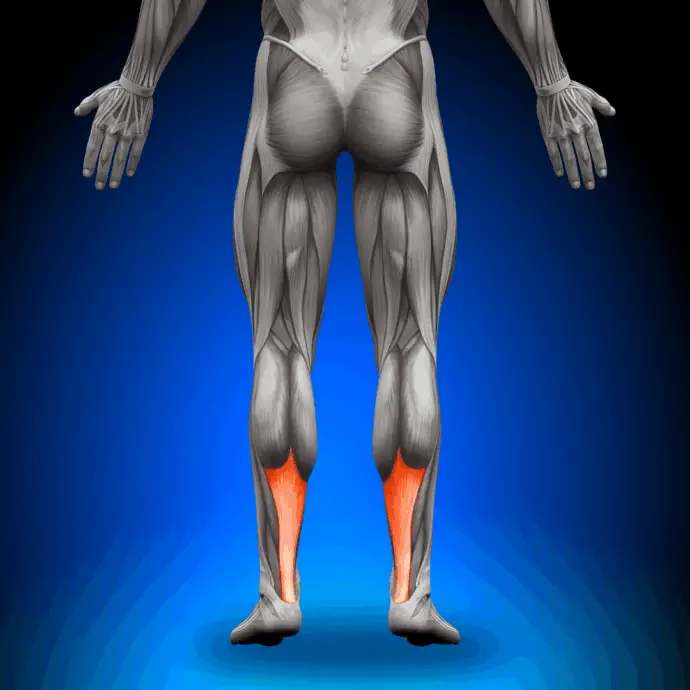This article is a quick guide to what you need to know to overcome tendon pain and enjoy healthy, pain-free tendons.
Tendons 101
Tendons attach muscles to bones. They are made of dense, regular connective tissue, with collagen fibers arranged in parallel from origin to insertion.
Because of this design, tendons have remarkable tensile strength. They are built to store and transfer elastic energy.
Tendons adapt to load, growing stronger and thicker with training.
Finally, tendons have poor blood supply, so they heal slowly when injured.
Fun fact: The Achilles tendon – shown below – is the largest, strongest tendon in the body.

Tendon Pain
Most tendon pain, also known as tendinitis (or tendinopathy by medical pros), stems from overuse. Doing “too much, too soon” causes most tendon problems.
Certain pain points are so common, they are named after their cause: Tennis elbow (outer elbow), Golfer’s elbow (inner elbow), and jumper’s knee (below kneecap).
The Rehab Roadmap
Tendon rehab is not complicated. Nor is it fast.
Here are the Top 7 Tendon Rehab Principles:
1) Don’t stretch: Aggressive stretching will aggravate an irritated tendon. However, light mobility work to maintain motion is typically fine.
2) Don’t rest: Staying in bed will reduce tendon pain…until it’s loaded again. Rest makes the tendon weaker. And poor blood supply means it won’t heal fast. Instead…
3) Get stronger: Tendons adapt to load, so increasing load over time (within pain parameters) is ideal for faster pain relief.
4) Work into pain: Rehab experts advocate for 0-4/10 pain during tendon rehab exercises, as long as symptoms are not exacerbated afterwards. Light pain levels indicate sufficient stimulus to remodel the tendon.
5) Use isometrics: Isometric exercises (contracting the muscle without moving) offer short-term pain relief for tendon pain, making exercise and rehab more comfortable.
6) Limit compression: Compression irritates tendons, so avoid tendon-compressing positions early in rehab. These vary based on pain location, so work with your physio to determine exercises to avoid.
7) Stay patient: Tendon rehab takes a few weeks to a few months, so patience and diligent exercise adherence are crucial for successful recovery.
Bottom Line
Tendon pain is a common overuse injury that resolves with an intelligent rehab approach.
Avoid exacerbating activities and employ proper load-management to ensure accelerated recovery and return to normal activities.
For more tendon management principles, check out this extensive article on Golfer’s Elbow Rehab.
Have you dealt with tendon pain? Drop a comment and let me know.
And for more evidence-based rehab and recovery insights, join the free Facts & Physio Newsletter. Plus, get The Recovery Checklist when you sign up.

